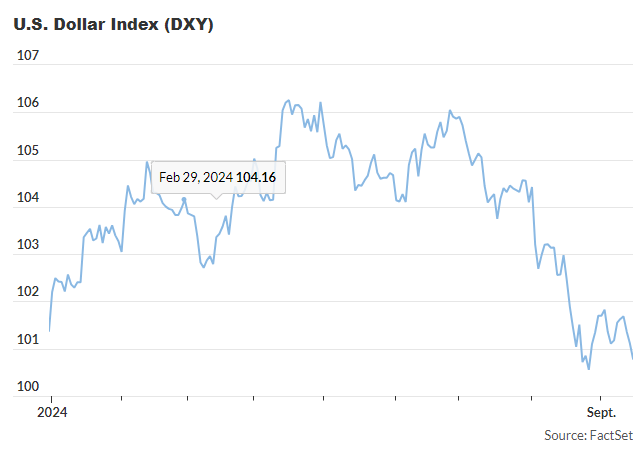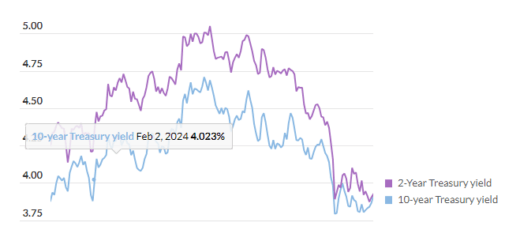U.S. Dollar Drops: How a Fed Rate Cut Shapes the Future
Analyst Joe Tuckey suggests that a larger rate cut from the Federal Reserve may indicate “growth concerns and economic trouble ahead.”
The U.S. dollar has been sliding as markets brace for the Fed’s anticipated interest rate cut on Wednesday. The size of the cut could determine whether the dollar weakens further or presents a buying opportunity.
On Monday, the ICE U.S. Dollar Index hit 100.77, its lowest level this year, down from a peak of 106.26 in April. The dollar also reached a one-year low against the yen.
Market sentiment shifted significantly, with a 63% chance of a 50-basis-point cut — the largest in 16 years — up from 50% last week. This shift followed commentary from Wall Street Journal’s Greg Ip and former New York Fed President Bill Dudley. The odds of a 25-basis-point cut dropped to 37%.

Tuckey, head of FX analysis at Argentex, believes a larger cut could drive the dollar to new lows, while a smaller 25-basis-point cut might lead to less volatility. He explained that “a larger cut points to concerns about growth and potential economic trouble.”
The U.S. dollar performance hinges on U.S. growth prospects and interest rate trends relative to other global economies. The yen has gained strength against the dollar, with the Bank of Japan expected to raise rates again by year-end, following its exit from negative rates in March.
Their next policy announcement comes two days after the Fed’s decision.
Uncertainty surrounds whether the Fed will opt for a bigger cut to fend off recession risks or stick with a more measured 25-basis-point reduction.
According to TD Securities strategist Mark McCormick, while initial market reaction will hinge on the Fed’s move, data in the coming months will ultimately drive the dollar’s direction. TD also anticipates a potential rebound for the dollar if the Fed takes a gradual approach to rate cuts.




